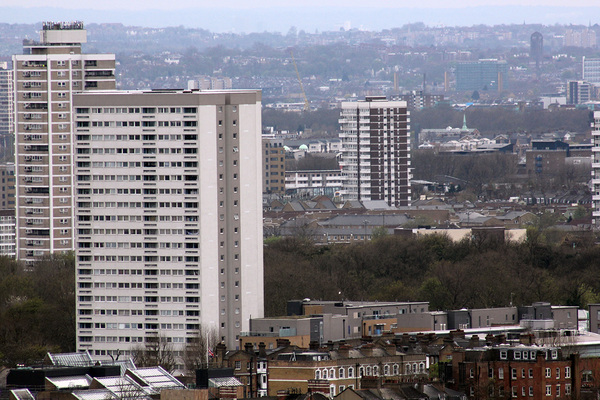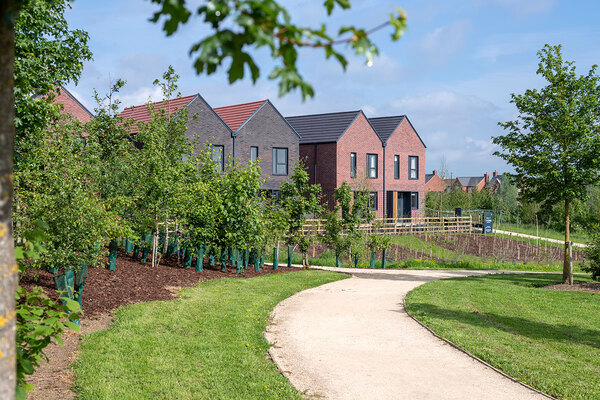The year in review: finance
As the sector got to grips with the pandemic, there was a flurry of boardroom activity this year, with mergers and fundraising firmly on the agenda. James Wilmore runs through the biggest stories
After last year’s hiatus, merger and acquisition (M&A) activity kicked back into gear with some eye-catching tie-ups.
The largest of the bunch, due to complete next year, is Peabody’s merger with fellow G15 landlord Catalyst, which will create a 104,000-home association – the UK’s second largest social housing landlord.
Liverpool-based giant Riverside also took on troubled G15 member One Housing, which gave birth to a 75,000-home organisation. Elsewhere, Greensquare and Accord Housing Association finally completed their merger, first announced in February last year, to create a 25,000-home group.
Just this month it was revealed that 45,000-home Orbit Group is in talks to merge with 11,600-home Swan amid the latter being found non-compliant by the English regulator.
But not all proposed partnerships went to plan.
A move by Sanctuary and Southern Housing Group to merge and overtake Clarion as the UK’s biggest social landlord collapsed in April. PA Housing and Accent’s efforts to tie the knot to create a 43,000-home organisation also fell by the wayside.
Mergers happen for many reasons, but a desire to cut costs through economies of scale is often high on the list of benefits.
Due to number of the financial challenges many social housing landlords are facing, it is not surprising that M&A activity is back with a vengeance.
The pincer movement of the building safety crisis and decarbonisation – both vast, long-term challenges – has meant providers are having to make tougher-than-ever choices.
London’s 12 largest landlords – still collectively known as the G15 – estimated that its members will have paid £3.6bn by 2036 to cover fire safety costs.
Coupled with latest estimates, it could cost English housing associations £36bn to decarbonise their stock.
Providers are also facing a balancing act over investing in new properties and maintaining existing homes, as government reforms to improve sector standards and give residents more of a voice post-Grenfell are due to take effect.
The pressures have led to a significant number reducing their development plans. In L&Q’s case, new chief executive Fiona Fletcher-Smith cut its annual housebuilding target by 70%, citing mounting fire safety costs.
Meanwhile, some housing associations have turned to for-profits providers to help them with their housebuilding efforts. Notably, Optivo’s deal with Blackstone-backed Sage Housing.
The move was more evidence of the growing, yet still small, presence of for-profits in the sector that continue to build their stock amid predictions they could deliver around 130,000 new homes over the next five years.
Other factors have been at play to give housing associations some financial breathing space. Interest rates have remained low, while the continued rise of environmental, social and governance (ESG) up the agenda has played to their advantage.
While the idea of ESG has been around for a long time, investors are increasingly looking to organisations that make a difference. Housing associations, which are in the added sweet spot of being partially publicly funded with property as assets, have moved to take advantage.
Sustainable finance frameworks, aimed at securing funds based on meeting ESG targets, were unveiled and in some cases utilised by the likes of Clarion, L&Q, Metropolitan Thames Valley, Platform Housing Group, Stonewater, Anchor and Flagship Homes. More of this activity is expected.
Fundraising has also been helped by the emergence of Euro Medium-Term Note programmes, which provide quick access to the capital markets.
Unsurprisingly, debt levels remain high. S&P has forecast that by the end of 2023 financial year, borrowing across the sector will have risen to around £107bn.
With the mounting challenges, many housing associations have felt the pressure on their bottom lines. Analysis by Inside Housing’s sister title Social Housing found that among the UK’s 184 biggest housing associations, the total pre-tax surplus figure fell 23% to £3bn.
However, there was significant variance among providers. In England, for example, while more than half (71) of the 129 landlords analysed saw a drop in pre-tax surplus, 59 reported a rise.
Either way, this did not stop former housing secretary Robert Jenrick rekindling a government attack on pay levels among housing association chief executives.
Fears over rising rents arrears did not prove as bad as expected for some this year. However, looking ahead as unemployment is forecast to peak next year, the economic impact of the pandemic and Brexit looks set to continue.
Nevertheless, the housing association sector remains in a relatively safe and stable place.
Helped by the government-backed ability to raise rents by up to 1% above the consumer price index, low rates of borrowing and strong liquidity, housing providers are sheltered. For now.
Major stories of 2021
News stories
Scammers seek thousands of pounds from individuals for fake L&Q bonds
One of the country’s largest housing associations exits SHPS
Housing associations increasingly looking to partner with for-profits to develop new homes
For-profit’s CFO paid more than any housing association CEO
Housing associations to reach up £107bn in debt by 2023, S&P predicts
Features and analyses
Explainer: what the SHPS valuation means for housing associations and employee pensions
Inside Housing chief executive salary 2021
Back from the brink: how First Priority is attempting to rebuild
What to look out for next year
The ESG train continues to chug along, so expect it to be an even bigger area of growth in finance next year, as the impact of COP26 continues to influence business planning.
Housing associations seem to be a ready-made place for investor money, with the activities they carry out ticking the environmental, social and governance boxes needed for an investment to be deemed an ESG investment. We will see many more landlords establishing ESG frameworks to attract investors and make it clear how their investments are performing within those parameters.
The trend for consolidation into bigger organisation through M&As looks likely to continue, too. The building safety, net zero and development requirements are not going away, and it is clear there is a belief within some organisations that being bigger means these headwinds are easier to deal with.
Expect more collaboration between for-profits and housing associations, particularly when it comes to development. The M&G–Hyde deal was a trailblazer, but a handful more are to follow.
For associations which are forking out bucket loads of cash on making their existing buildings safe, habitable and energy efficient, using a cash-rich for-profit to pay upfront development costs seems a sensible option, particularly if they can manage them afterwards.
However, the problem comes further down the line when the management deal ends and the stock can be taken out of the social housing sector.
Sign up for our development and finance newsletter
Already have an account? Click here to manage your newsletters












